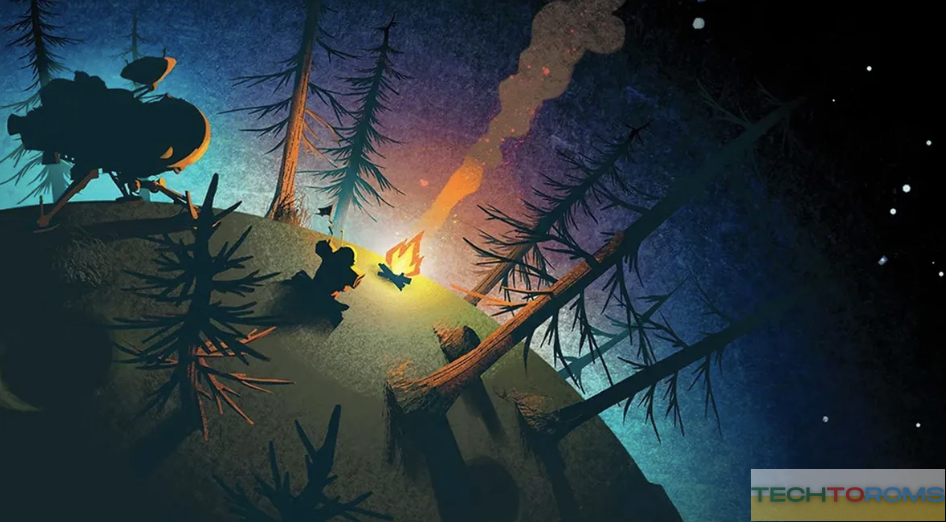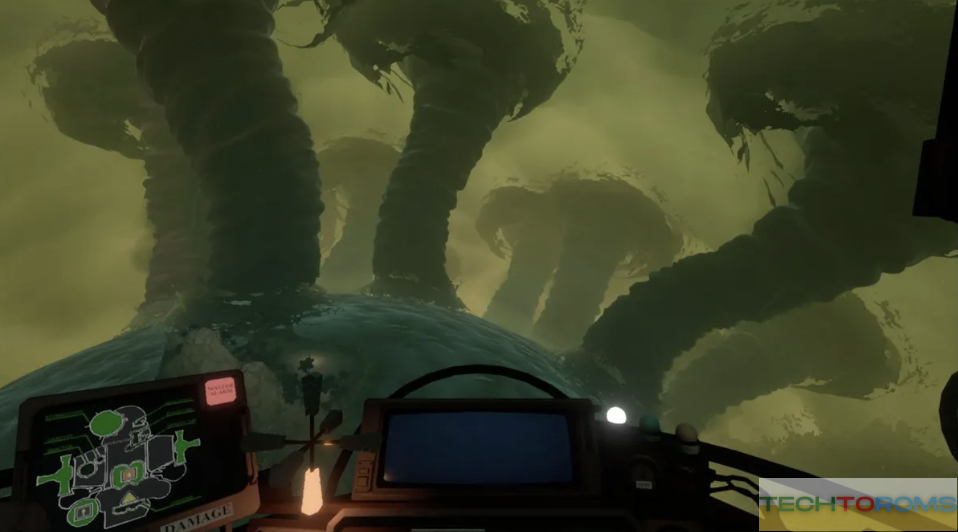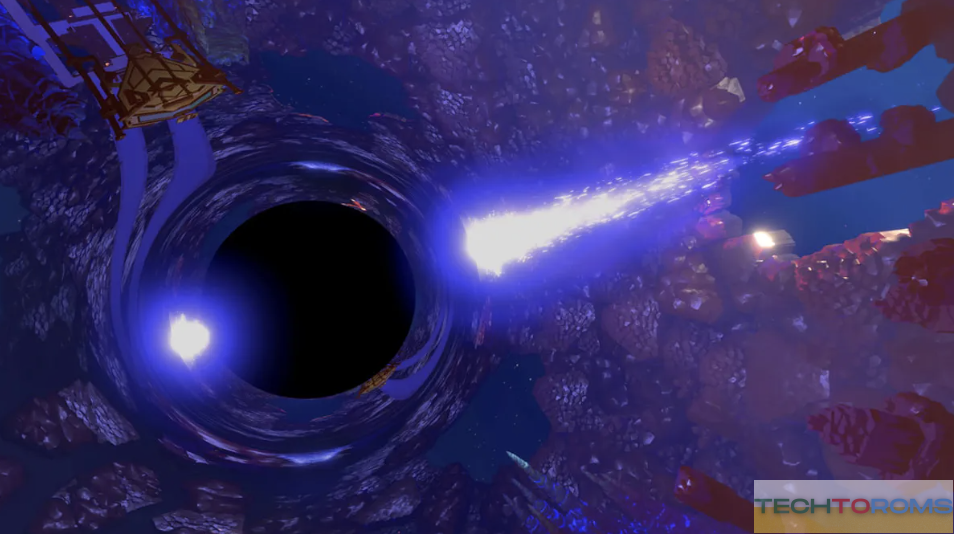The Jaw-Dropping Sci-Fi Video Game Everyone Needs to Play Once
I’ll never forget the first time I said “holy shit” while playing Outer Wilds. For the first time, I’d gotten the launch keys to my spacecraft. Still confused, still a little hesitant. What’s going on here? What is this filmic narrative about? How does this all work? Where should I be going?

Still, I followed the directions. My spaceship — a rickety wooden shack with a tin roof — loomed before me. I pushed some buttons and was instantly flying through space, free as a bird. Still perplexed. Still unsure of what was going on. This makes no sense to me at all.
Then, in the far distance, a planet. A vivid green dot blotched against the darkness. “I’ll go there,” I murmured to myself, unsure of what to do.
I slammed against the ship’s controls as I attempted to reach for the green planet, eventually crashing into its thick foliage at full speed. “I can’t see,” I murmured, but then the cloud dispersed.
I was shocked.

I had only a split second to react before I dove headfirst into the sea and saw it. This was a water planet, in size and shape like a toy. It was the whirlwinds that startled me, though. At least six of them were battling one another in an otherworldly storm on the waves, according to my observations. My eyes went wide as saucers when I floated back to the top of the surface, water streaming down the windows, water streams down my goggles.
The two whirlwinds raced across the surface, so forceful that they picked up entire islands and hurled them into space — literally into space – before crashing back onto the planet. I’d never seen anything like this in a video game. But this was Outer Wilds. In Outer Wilds, the unbridled creativity is commonplace.
“Holy shit.”
Outer Wilds is a space adventure, but it’s also a mystery to solve. Outer Wilds is a game in which you play detective, investigating the ruins of an vanished culture in the hopes of figuring out exactly what happened. The surprise: Outer Wilds features a Groundhog Day-style time loop as its center. You just have 22 minutes to look into it before the sun goes ka-boom and destroys your entire solar system. All you have left is the information you obtained in those few precious moments.
Outer Wilds is a genre-bending mystery that unfolds in the form of typical video game tropes, such as audio logs, written notes, and so on — but the execution is so ingenious, you barely notice. Outer Wilds regularly raises an astonishment level in me that no other video game has ever achieved.
Outer Wilds has you moving back and forth between a number of different planets, each more odd than the last. Each is burdened with strange futuristic technology left behind by the Nomai. On one planet, you may discover a clue that points to a new location on another planet you previously visited. You worm yourself deeper into these beautiful settings, and your understanding of the problem you’re attempting to solve improves.
There are no guns and no difficult platforming. In Outer Wilds, the currency is knowledge, which players utilize to unravel the next step in their journey and, as a result, solve this perplexing mystery on a meta level. A sense of constant wonderment follows; it’s like watching someone discover something new for the first time every day. There are “holy shit” moments throughout Outer Wilds that make it unforgettable.

Outer Wilds is always awe-inspiring. There’s Giant’s Deep, a planet with two hurricanes in conflict, but there’s also Brittle Hollow, which is crumbling away before your eyes.
You descend deep beneath the earth’s surface and observe as whole sections of the globe are consumed by a black hole that vibrates at its heart. If you make even a minor error, you risk sinking through it. And what happens if you fall into a black hole in Outer Wilds? It would be impolite to reveal the surprise. But it’s just as perplexing as one might expect.
The Outer Wilds is punctuated by its occurrences. You stop looking at the moon’s quantum nature and it vanishes. Technology that allows you to instantly change places across two distant locations. Twin planets linked by a pillar of sand that constantly flows back and forth, dramatically reshaping both worlds like an intricate hourglass.

Outer Wilds, unlike the chilly, clinical sci-fi of Interstellar or Arrival, is a homely and almost acoustic creation: a tiny snow globe of a universe precisely imagined and carried out. As if it grew from Bon Iver’s beard as it collapsed. It has its allure because of this. Its most extreme moments evoke astonishment since they are anchored in our own time period, almost anachronistic.
You go into space in a boat made of wood, wearing a spacesuit that appears to be from the 19th century. Your home planet is a hipster’s fantasy replica of a shrinking subset of Canada’s wilderness or a Grizzly Bear music video. The unique cast of characters in Outer Wilds swing on swings on alien planets and play the banjo at campfires as the universe collapses around them.
It all leads to this overpowering sensation: You’re trapped in a world where your conventional notions don’t make sense. Where big sci-fi ideas of space travel seem only just beyond your primitive mind. All you can do is gawk — in amazement — as the sun explodes in a brilliant blue flash, bringing an end to your time loop. Before you spring back to life with a gasp, eager to explore the strange universe of Outer Wilds all over again with new eyes.
